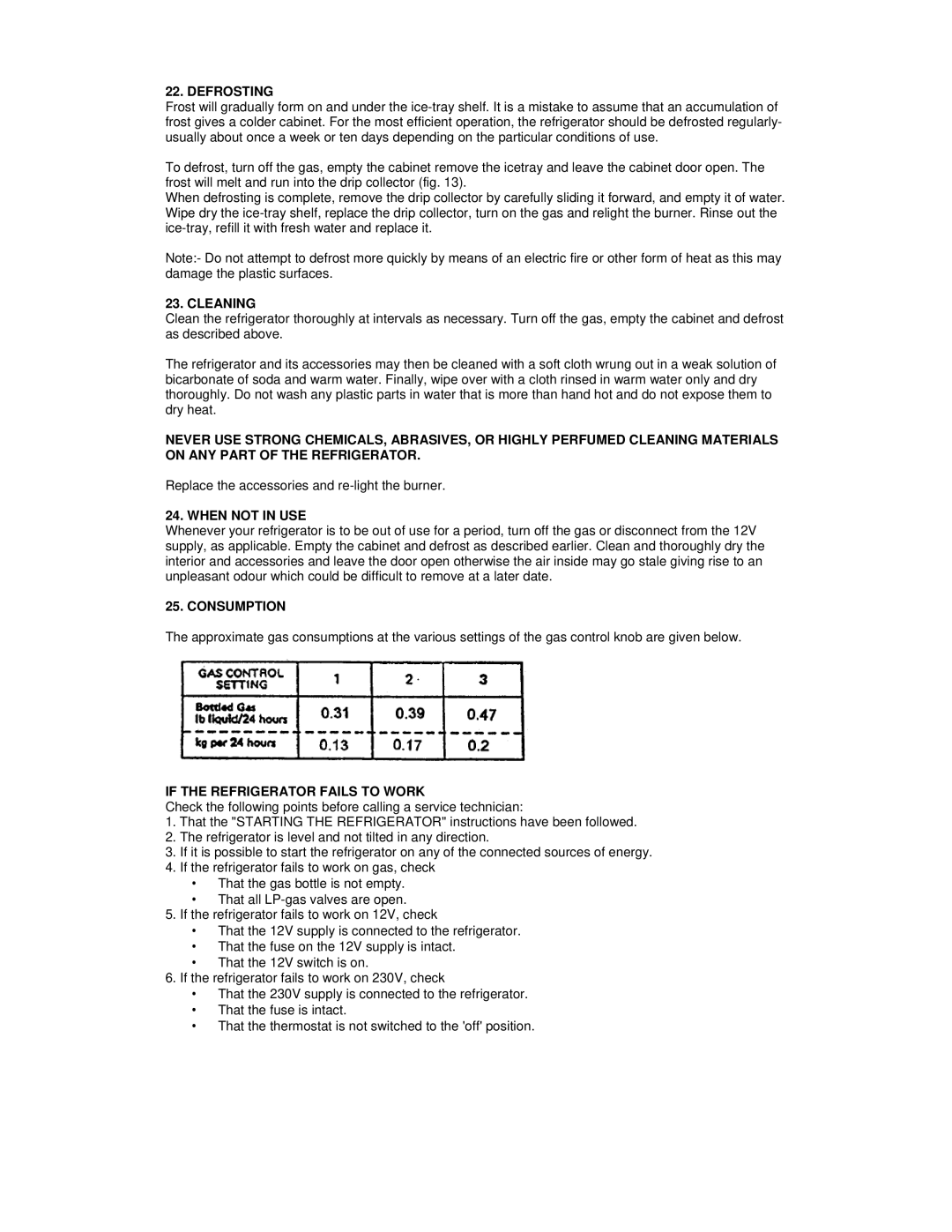RM 122F specifications
The Electrolux RM 122F is a versatile and efficient absorption refrigerator designed for a variety of applications, particularly in the leisure and camping sector. This model exemplifies Electrolux's commitment to quality and innovation, offering users a reliable cooling solution for their mobile lifestyles.One of the standout features of the RM 122F is its three-way power system. It can operate on gas, 12V battery, or 230V mains electricity, making it incredibly adaptable for different situations, whether you are on the road in a caravan, enjoying a camping trip, or parked at a holiday home. This flexibility ensures that users always have access to refrigeration, regardless of their power source.
The refrigerator boasts a spacious interior with a total storage capacity of approximately 140 liters, providing ample room for food and beverages. It is designed to keep your groceries organized, featuring various shelves and compartments that cater to different storage needs. The adjustable shelves allow for customization based on the items stored, enhancing usability for users with diverse needs.
Another important feature of the RM 122F is its advanced cooling technology. Utilizing absorption refrigeration, this model is not only quiet but also produces minimal vibrations, making it ideal for use in confined spaces such as a camping vehicle. The temperature control allows users to set the desired cooling level, ensuring optimal preservation of food items.
In terms of design, the Electrolux RM 122F sports a sleek and modern aesthetic that complements any camper or caravan interior. The user-friendly control panel is intuitive, allowing for easy operation and configuration without unnecessary hassle.
Furthermore, energy efficiency is a key characteristic of the RM 122F, which adheres to stringent environmental standards. The appliance is engineered to minimize energy consumption while maximizing cooling performance, ensuring that users can enjoy their off-the-grid adventures without the fear of draining their power supply.
Overall, the Electrolux RM 122F represents an ideal choice for those seeking a reliable and efficient cooling solution tailored for mobile living. With its robust features, flexible power options, and thoughtful design, this absorption refrigerator stands out as a dependable companion for any adventure or leisure activity.

